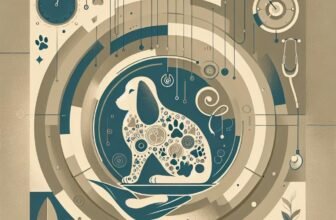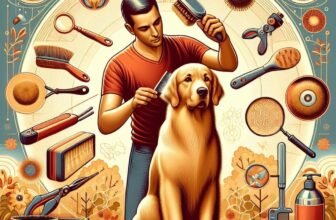
Check out our latest products
When it comes to grooming our furry friends, we often focus on the more visible areas, such as their coats and paws. However, we cannot overlook vital areas like the tail and underbelly, which require special attention to ensure our pets stay clean, healthy, and pleasant. grooming these areas not only contributes to your pet’s overall hygiene but also allows you to bond with them while checking for any potential skin issues or irritations. In this article, we will explore essential tips for grooming your pet’s tail and underbelly, providing you with practical techniques and advice to make the process as smooth and enjoyable as possible for both you and your pet.Whether you’re a seasoned groomer or a new pet owner, these insights will help you maintain your pet’s well-being and happiness.
Table of Contents
- Understanding the Importance of tail and underbelly Grooming
- Tools You Need for Effective Grooming
- Step-by-Step Techniques for Tail and Underbelly Care
- Common Grooming Challenges and How to Overcome Them
- Wrapping Up
Understanding the Importance of Tail and Underbelly Grooming
grooming your pet’s tail and underbelly is more than just a vanity project; it plays a crucial role in their overall health and well-being. Regular grooming helps to eliminate dirt,debris,and loose fur,promoting healthier skin and a shinier coat. Additionally, these areas are prone to matting and tangling, which can lead to skin irritations and infections if not addressed. By making grooming a routine part of your pet care, you can also keep an eye out for any unusual lumps, bumps, or signs of allergies that could indicate health issues needing veterinary attention.
When it comes to grooming these often-overlooked regions, consider the following essential tips:
- Brush Regularly: Use a suitable brush to prevent tangles and remove loose fur.
- Check for Skin issues: Look for redness, swelling, or unusual odors as you groom.
- Be Gentle: These areas can be sensitive, so use a soft touch to avoid hurting your pet.
- Use Quality Products: Choose shampoos and conditioners formulated for your pet’s specific fur type.
| Grooming Tool | Purpose |
|---|---|
| Brush | to remove tangles and loose hair |
| Comb | To smooth and detangle fine fur |
| Fine-toothed Rake | To remove undercoat and prevent matting |
| skin Scraper | To check for irritations and keep skin healthy |
Tools You Need for effective Grooming
To ensure a smooth and pleasant grooming experience for your pet,having the right tools at your disposal is essential. Start with high-quality grooming scissors to tackle any fur that is too long around the tail and underbelly areas. Pair this with a slicker brush for effectively removing tangles and mats without pulling on your pet’s skin. Don’t overlook a wide-toothed comb that can gently work thru the underbelly fur, especially for thicker-coated breeds. Keeping a pet-safe detangling spray handy can make this task even easier; it helps to soften the fur and minimize static.
Additionally, consider investing in a pet-specific grooming glove which can help remove loose hair while massaging your pet’s skin, ensuring a calming experience. For those particularly sensitive areas, a soft bristle brush is key to avoiding discomfort. Moreover,a lint roller can be a fast solution for tidying up excess hair after grooming sessions.To keep everything organized, a grooming cart can help store these items conveniently, making the process not only effective but also enjoyable for both you and your pet.
Step-by-Step Techniques for Tail and Underbelly Care
To keep your pet’s tail and underbelly healthy and clean, start with a gentle brushing routine. This helps to remove loose fur and prevents matting, especially in longer-haired breeds. Choose a brush suitable for your pet’s coat type—a slicker brush works wonders for thick fur, while a bristle brush may be best for short hair. As you groom, pay extra attention to the areas around the tail and underbelly, as these spots can frequently enough trap dirt and debris. Be sure to use slow, gentle strokes to keep your pet calm and comfortable. Here are some additional tips:
- Ensure the grooming area is well-lit to spot any skin issues.
- Use detangling spray if you encounter any knots or tangles.
- Check for signs of irritation such as redness or unusual odor.
After brushing, it’s significant to consider cleaning and moisturizing the underbelly and tail area. A soft, damp cloth can be used to wipe away any build-up or staining, especially in pets prone to skin issues or allergies. For full care, a pet-friendly moisturizer can be applied sparingly to prevent dryness. Make it a weekly ritual to monitor their skin condition during grooming sessions.Here’s a concise table of common products that can aid in tail and underbelly care:
| Product Type | Recommended use |
|---|---|
| Brush | Daily grooming |
| Detangling Spray | For knot removal |
| Moisturizer | To hydrate skin |
| Gentle Cleanser | For regular wiping |
Common Grooming Challenges and How to Overcome Them
Grooming your pet’s tail and underbelly can come with its own set of challenges, especially if your furry friend is feeling anxious or uncooperative. One common issue is resistance to handling, which can manifest as squirming or barking. To tackle this, create a calming habitat.Start by using soothing voices and gentle touches to help your pet relax before grooming begins. You might also consider employing positive reinforcement techniques by offering treats or verbal praise during the grooming process, which can make your pet more comfortable and willing to cooperate.
Another challenge pet owners often face is dealing with matting or debris accumulation in these sensitive areas. Regular maintenance is crucial, and there are several effective solutions to consider:
- Use a wide-toothed comb to detangle knots gently without causing discomfort.
- Apply a pet-safe detangling spray to help ease out any stubborn mats.
- In extreme cases, if mats are too tight, consult a professional groomer for assistance.
Incorporating a regular grooming schedule tailored to your pet’s specific needs not only helps manage these issues but also reinforces a trusting relationship between you and your pet.
Wrapping Up
grooming your pet’s tail and underbelly is more than just a regular chore; it’s an essential part of their overall care and well-being. by following the tips outlined in this article, you can ensure that your furry friend remains comfortable, clean, and happy. Remember to approach grooming with patience and positivity, making it a bonding experience rather than a burden. Regular grooming not only helps prevent health issues but also allows you to spend quality time with your pet.So gather your tools, take your time, and enjoy the process. Your pet will thank you with wagging tails and joyful purrs! Happy grooming!










